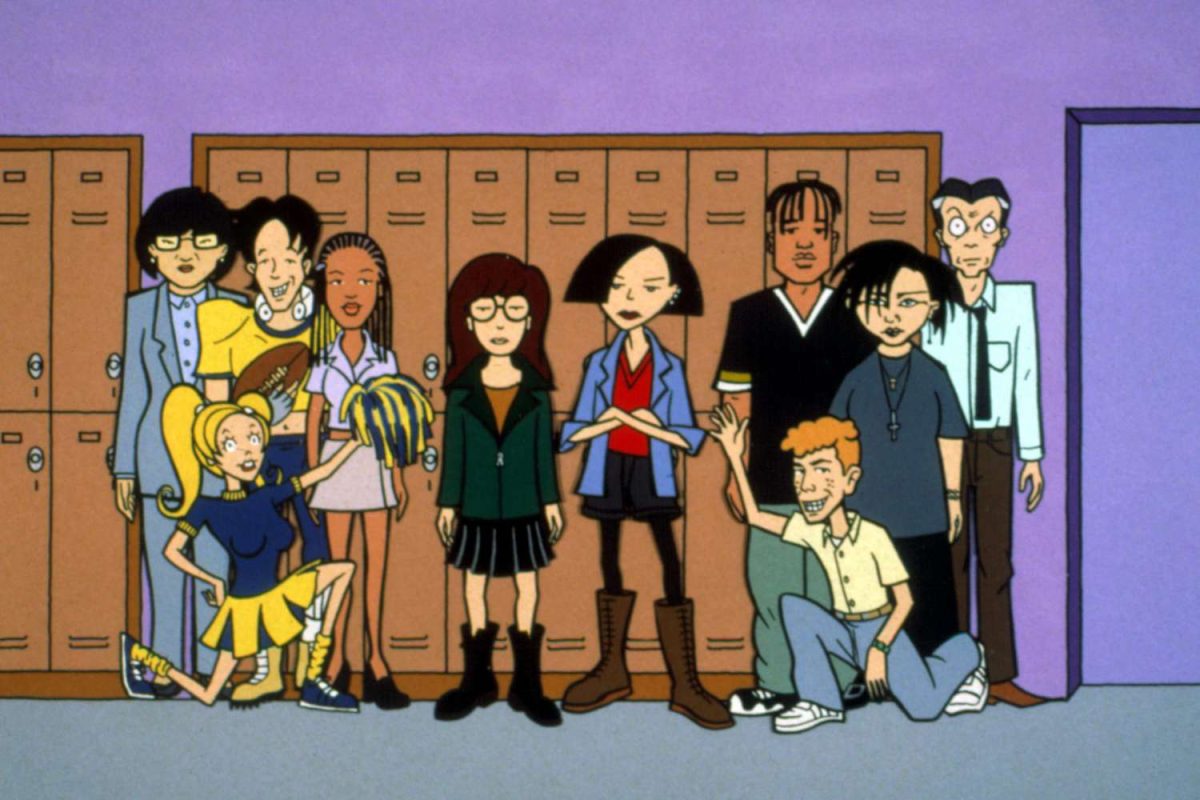The late ‘90s MTV animated sitcom that reached teenage misfits across the nation is still reaching them today. “Daria” gave the world an everyday heroine – albeit a cynical, dry and antisocial one – in Daria Morgendorffer. She represents the misanthropic smart-aleck who lives within all of us, regardless of generational lines.
The high school satire show followed the daily mundanities of Daria and her best friend, Jane Lane, as they observed and criticized the conformist suburban society surrounding their small, but mighty, freethinking bubble. Though the conversations shared between Daria and Jane about the bores of life prove to be timeless, the show stylistically represented its time. As the comedy was produced by MTV, each episode featured several songs that were being played on the station at the time of its release, ranging from grunge to punk to dance pop. The ‘90s style showcased on the show is also a key element of its position in pop culture, displaying off-beat, grunge fashion through Daria and Jane and even the preppy, girly look on Quinn, Daria’s popular younger sister. As the ‘90s and 2000s styles and music make a comeback, “Daria” is more culturally relevant than ever.
While “Daria” stylistically aligned with the trends of the time, the subject matter tackled within each episode was not. The show was extremely subversive for its time, discussing themes that are still considered controversial today such as racism, intersectionality, body-image issues and commercial feminism. The sitcom has been and continues to be lauded for its witty and poignant commentary on serious topics, particularly through anti-consumerism.
“Daria” is greatly commended for its portrayal of complex and alternative female characters as Daria and Jane serve as examples of how to write multifaceted women on television. The show not only displayed meaningful conversations between Daria and Jane about the world but also examined how they were treated within it. The duo often discussed double standards, stereotypes and unrealistic expectations set for women in the mainstream, many of which are still relevant today.
Everyone was a misfit in “Daria,” which is part of the reason why it resonates with so many who watch it. The true outcasts of Lawndale High School, like Daria and Jane, were not the only ones who had their fair share of social isolation – the popular kids did too. “Daria” shed light on the hidden insecurities, anxieties and struggles that affected jocks, punks, cheerleaders and nerds alike. The show gave a voice to the voiceless, illuminating issues that primarily affected young people such as the negative effects that capitalism and performative activism have on self-esteem. The problems that “Daria” addressed continue to have an impact on everyone in society – regardless of social standing – and it is just another reason why the show is so culturally significant.
The messages “Daria” imparts to its audience range in complexity but consistently resonate with people of all backgrounds, ages and social statuses. Despite Daria’s total disinterest in society, her hyper-awareness always led her to the ultimate conclusion that every person is an outcast in their own way. Most importantly though, “Daria” shows us that Dr. Martens’ alt-rock and dry wit will always be super cool.







